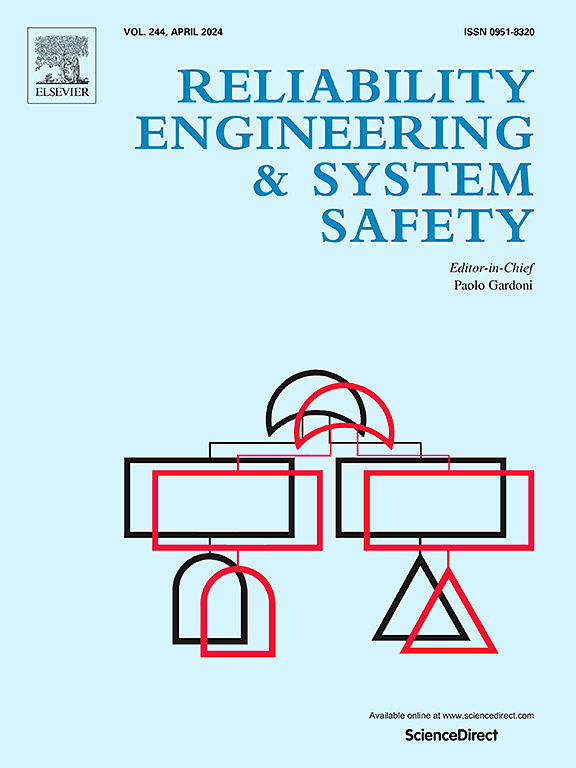A new weighted rough set and improved BP neural network method for predicting forest fires
IF 9.4
1区 工程技术
Q1 ENGINEERING, INDUSTRIAL
引用次数: 0
Abstract
To solve the quality problems of redundant risk elements, data imbalance, and noisy samples, which are commonly found in forest fire datasets, and to further improve the accuracy of forest fire risk prediction. In this paper, a forest fire prediction method is proposed, which combines a probability-weighted rough set attribute reduction (PWRS-AR) strategy with a particle swarm optimization improved BP neural network (PSO-I-BPNN) for forest fire prediction. Firstly, a probabilistic weighted rough set attribute reduction method is designed to effectively eliminate non-critical and redundant features in the dataset and simplify the input space of the neural network. Subsequently, a particle swarm optimization (PSO) algorithm is employed to refine the BP neural network (BPNN), aiming to elevate both the precision and efficiency of forest fire prediction. To validate the method’s effectiveness, experiments are conducted on three representative forest fire datasets. The results show that compared with the traditional machine learning prediction methods, the proposed forest fire prediction model achieves a significant improvement in prediction accuracy and is more suitable for early warning and disaster prevention and mitigation strategies in forest fire-prone areas.
一种新的加权粗糙集和改进的BP神经网络预测森林火灾方法
解决森林火灾数据集中普遍存在的风险元素冗余、数据不平衡、样本噪声等质量问题,进一步提高森林火灾风险预测的准确性。本文提出了一种将概率加权粗糙集属性约简(PWRS-AR)策略与粒子群优化改进BP神经网络(PSO-I-BPNN)相结合的森林火灾预测方法。首先,设计了一种概率加权粗糙集属性约简方法,有效地剔除数据集中的非关键和冗余特征,简化神经网络的输入空间;随后,采用粒子群优化(PSO)算法对BP神经网络(BPNN)进行改进,以提高森林火灾预测的精度和效率。为了验证该方法的有效性,在三个具有代表性的森林火灾数据集上进行了实验。结果表明,与传统的机器学习预测方法相比,本文提出的森林火灾预测模型预测精度显著提高,更适合森林火灾易发地区的预警和防灾减灾策略。
本文章由计算机程序翻译,如有差异,请以英文原文为准。
求助全文
约1分钟内获得全文
求助全文
来源期刊

Reliability Engineering & System Safety
管理科学-工程:工业
CiteScore
15.20
自引率
39.50%
发文量
621
审稿时长
67 days
期刊介绍:
Elsevier publishes Reliability Engineering & System Safety in association with the European Safety and Reliability Association and the Safety Engineering and Risk Analysis Division. The international journal is devoted to developing and applying methods to enhance the safety and reliability of complex technological systems, like nuclear power plants, chemical plants, hazardous waste facilities, space systems, offshore and maritime systems, transportation systems, constructed infrastructure, and manufacturing plants. The journal normally publishes only articles that involve the analysis of substantive problems related to the reliability of complex systems or present techniques and/or theoretical results that have a discernable relationship to the solution of such problems. An important aim is to balance academic material and practical applications.
 求助内容:
求助内容: 应助结果提醒方式:
应助结果提醒方式:


